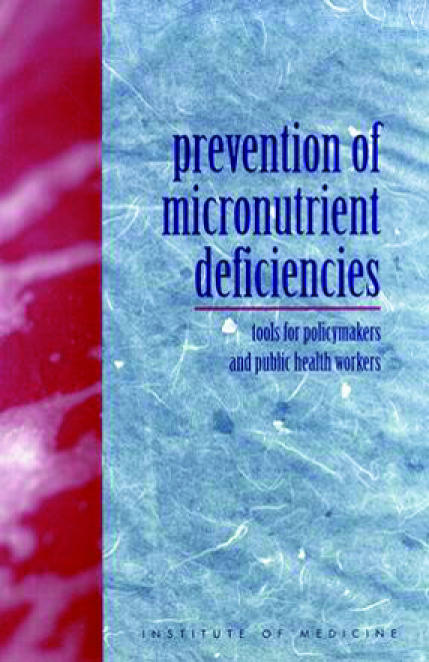National Academy Press, £26.95, pp 210 
ISBN 0 309 06029 X
———————
Rating: ★★★
This is a little gem of a book which, in spite of its small size, contains a vast amount of information. It is a compilation of recommendations and background papers by the Committee on Micronutrient Deficiencies, Food, and Nutrition; the International Health Boards of the US National Institute of Medicine, and other experts, who met in December 1996.
There is considerable interest in, and confusion about, micronutrient malnutrition, much of which is subclinical. Even when data on prevalence exist, the appropriate interventions in target populations are subject to much debate. While a wealth of information is available on iron and vitamin A individually, few reviews have tackled the issue of combined strategies for prevention and treatment. This book therefore represents a welcome advance, with a conceptual framework for policy makers and public health professionals to see what solutions are appropriate for populations with differing risks. I could quibble with the arrangement of the book’s sections, with the summary recommendations preceding the background chapters. There is thus some understandable duplication and repetition. However, the background papers on iron and vitamin A by Viteri and Underwood contain a wealth of information and are very well presented.
Given the exponential increase in available information on micronutrient malnutrition in recent years, and the strong recommendations of integrated interventions with multiple micronutrients, it is somewhat surprising to see almost no mention of zinc as a major target micronutrient. There is little mention of the possibility of iron fortification of drinking water and only skimpy reference to the risks of iron and zinc interaction after supplementation. Similarly, given the legitimate concern in some quarters of an increased risk of infections with iron supplementation and adverse outcome in pneumonia after blanket vitamin A supplementation, it would have been useful to devote greater space to these issues.
The controversy about possible adverse effects of vitamin A supplementation programmes in early infancy—risk of toxicity and interference with vaccine uptake—has also been largely ignored. Furthermore, I would have preferred greater discussion of the relative merits or risks of two particularly contentious areas in micronutrient supplementation—the merits of weekly versus daily iron supplementation and the efficacy of food based strategies versus preformed vitamin A supplementation.
These minor flaws apart, this is an extremely readable and timely book. It is an excellent repository of information, and the summary tables and case studies alone are worth the price. I hope that future editions, incorporating the second phase of this laudable project by the National Institute of Medicine, will provide similar information on zinc as well as actual case studies of multiple micronutrient supplementation.


